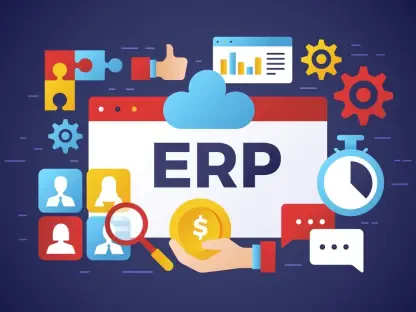I’m thrilled to sit down with Vijay Raina, a renowned expert in enterprise SaaS technology and software design. With his deep knowledge of the evolving landscape of enterprise solutions and AI-driven tools, Vijay is the perfect person to help us unpack Salesforce’s latest announcement of Agentforce 360. This new platform, revealed ahead of the annual Dreamforce conference, promises to reshape how businesses leverage AI agents, integrate with tools like Slack, and navigate a fiercely competitive market. In our conversation, we’ll dive into the standout features of Agentforce 360, explore how it fits into broader AI trends, and discuss what this means for enterprises looking to stay ahead of the curve.
How does Agentforce 360 stand out as Salesforce’s latest push into the enterprise AI space, and what’s driving the timing of this launch?
Agentforce 360 is Salesforce’s updated AI agent platform, designed to give enterprises more powerful and flexible tools to manage customer relations through AI. It’s a significant step up with features like advanced prompting capabilities, a dedicated builder tool for creating AI agents, and deeper integrations with platforms like Slack. The timing feels strategic—enterprise AI is heating up with competitors rolling out similar solutions, and Salesforce is capitalizing on the momentum before their Dreamforce conference to grab attention. Plus, with businesses hungry for AI that delivers real value, launching now positions them as a leader addressing those needs head-on.
Can you break down the Agent Script tool in simple terms and explain how it changes the game for AI agents?
Agent Script, set to launch in beta this November, is essentially a way to teach AI agents how to think through complex or unpredictable customer interactions. It lets users program responses for “if/then” scenarios, so the AI isn’t just parroting pre-set answers but adapting to the context. Think of it as giving the AI a playbook for handling curveball questions, making interactions feel more natural and reliable. This could be a big deal for customer service teams who need AI to tackle nuanced issues without constant human oversight.
What’s your take on the “reasoning” models powering Agentforce 360, and how do they differ from typical AI systems?
These reasoning models, backed by tech from Anthropic, OpenAI, and Google Gemini, are a cut above standard AI response systems because they’re built to analyze before replying, rather than just matching patterns in data. It’s like the difference between a student who memorizes answers and one who understands the material well enough to solve new problems. This makes Agentforce 360’s responses more thoughtful and relevant, especially for complex enterprise needs. It’s a smart move by Salesforce to tap into these advanced models to boost credibility and performance.
Tell us about the Agentforce Builder tool and how it empowers users to create and manage AI agents.
The Agentforce Builder, also hitting beta in November, is a centralized hub where users can design, test, and roll out AI agents without needing deep technical expertise. It’s like a workshop for crafting custom AI solutions tailored to a company’s specific goals. What’s neat is how it streamlines the process—everything happens in one place, which cuts down on complexity. This tool could lower the barrier for enterprises wanting to experiment with AI, making it more accessible to non-tech teams.
How does the integration of Agentforce with Slack enhance the user experience, and what’s on the horizon for this partnership?
Starting this month, Salesforce is weaving Agentforce apps—like those for sales, IT, and HR—directly into Slack, with plans to expand through early 2026. This means users can access critical tools without jumping between platforms, saving time and reducing friction. Looking ahead, Salesforce envisions Slack as an enterprise search hub, connecting to services like Gmail, Outlook, and Dropbox. It’s a bold vision to make Slack the go-to spot for finding and acting on information across a business’s ecosystem.
Slack’s new personalized Slackbot sounds intriguing—can you explain how it learns and what value it brings to users?
The updated Slackbot, currently in pilot, is designed to get to know its users over time by observing how they work and interact within Slack. It’s like having a virtual assistant that picks up on your habits and preferences. From there, it offers tailored insights or suggestions, like flagging important messages or recommending actions based on your workflow. For teams, this could streamline daily tasks and boost productivity by cutting through the noise of constant communication.
With the enterprise AI market getting so crowded, how do you see Salesforce carving out its own space with Agentforce 360?
Salesforce has a strong edge with Agentforce 360 thanks to its massive customer base—12,000 users already—and early adopters like Lennar and Adecco testing the upgrades. They’re also focusing on practical integrations, like with Slack, and user-friendly tools like Agentforce Builder, which make AI feel less intimidating for enterprises. While competitors are pushing hard, Salesforce’s established trust and ecosystem give it a solid foundation. The real test will be proving ROI, especially when studies show many AI pilots flop before production.
What’s your forecast for the future of enterprise AI platforms like Agentforce 360 over the next few years?
I think we’re going to see enterprise AI platforms like Agentforce 360 become even more intuitive and deeply integrated into everyday business tools. The focus will shift toward proving tangible results—cost savings, efficiency gains, or customer satisfaction—to justify the investment. We’ll likely see tighter competition, with platforms differentiating through niche features or industry-specific solutions. For Salesforce, staying ahead will mean doubling down on usability and partnerships to keep delivering value in a market that’s only going to get more demanding.









